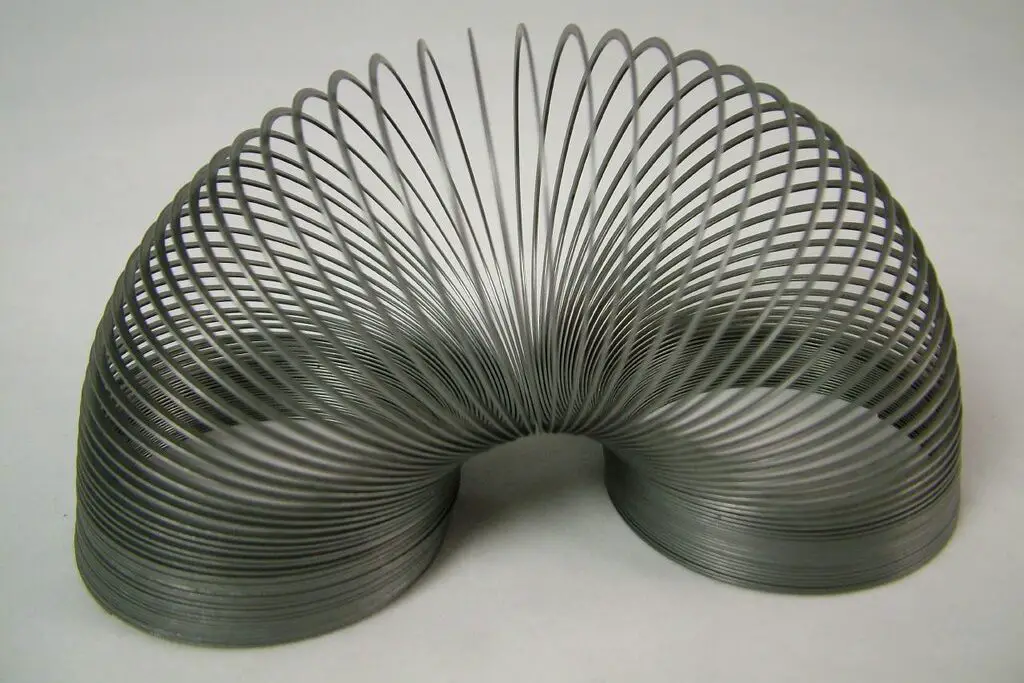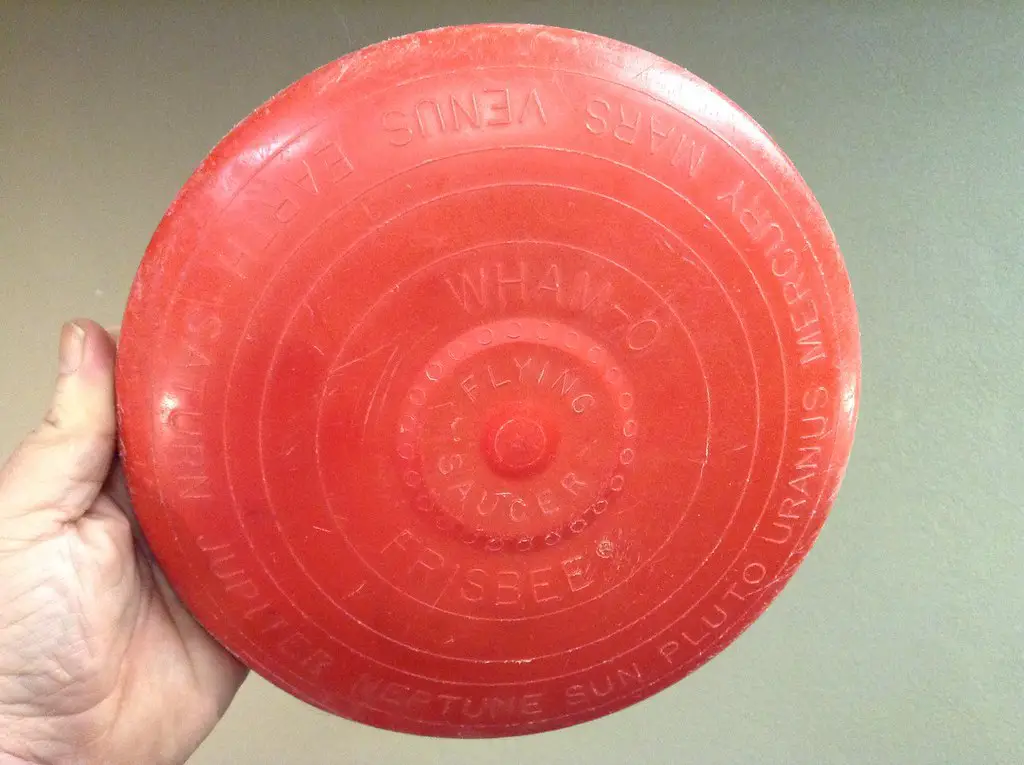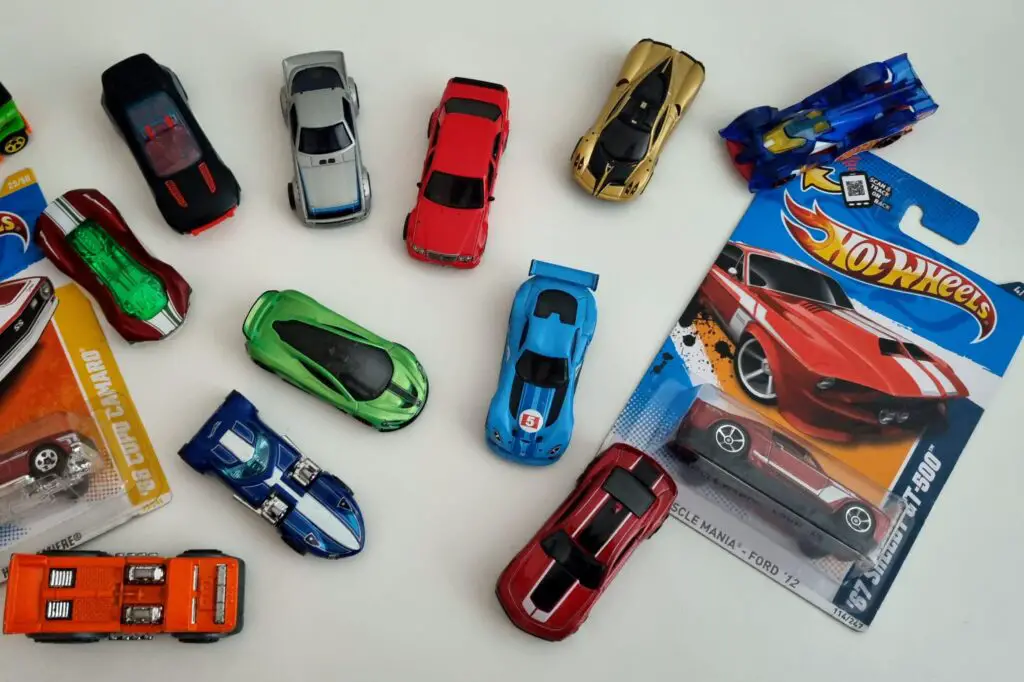1. The Slinky: From Military Training to Household Fun

The Slinky, that iconic toy that seemed to magically “walk” down stairs, was initially invented by naval engineer Richard James in the 1940s. James was working on creating a spring that could stabilize sensitive equipment aboard ships, especially during rough seas. When the spring fell to the ground in his workshop and started moving on its own, James realized he had a much more fun invention on his hands. He quickly pivoted from its military application to a toy, and in 1945, the Slinky was introduced to the world at the American Toy Fair.
The toy became an instant success, captivating kids and adults alike with its simple yet mesmerizing movement. While its origins were linked to military purposes, it’s hard to imagine now that the Slinky’s gentle, soothing actions were once intended to serve a much more technical role. Today, the Slinky remains one of the most beloved toys of all time, an unlikely heir to a wartime invention.
2. The Frisbee: A Military Tool Becomes a Fun Pastime

Before it became a symbol of fun in parks and beaches worldwide, the Frisbee had quite a different origin story. In the 1940s, Walter Morrison and his partner sold a plastic disc called the “Pluto Platter,” designed for fun outdoor games. However, the disc’s design drew heavily from military aerial targets, which were used during World War II for target practice. In fact, the idea for the Frisbee reportedly came about when Morrison had been inspired by the metal disc targets used in military training.
After the patent for the Pluto Platter was sold to Wham-O in 1957, the Frisbee became a household name. Its evolution from military target to recreational object symbolized the transition from war tools to civilian pleasures, showing how wartime inventions could take on new, less deadly purposes. Now, Frisbees are a staple of summer fun, far removed from their military roots.
3. The Nerf Gun: Training Tools Transformed into Toys

The Nerf gun, the blaster that made foam darts fly, was born out of the need for military training devices. In the 1960s, Parker Brothers created the first foam ball to serve as a safer alternative for training purposes. These foam balls were used in military exercises to simulate grenades or other projectile weapons, reducing the risk of injury during training sessions. It wasn’t long before they realized the potential for a less dangerous version of such weapons in the form of a toy.
In 1969, the first Nerf product, the “Nerf Ball,” was released, followed by a variety of foam-based toys. The Nerf gun, which debuted in the 1990s, expanded this concept, turning the idea of military-grade projectiles into a safe and playful alternative. Kids have been able to “battle” with Nerf guns for decades, enjoying the thrill of simulated warfare in a much more lighthearted, nonviolent form.
4. The Matchbox Cars: Military Vehicles Repurposed for Play

Matchbox cars, the miniature die-cast vehicles that filled toy boxes for generations, have military origins that are often overlooked. The brand was founded in 1953 by Jack Odell, who originally designed the toy vehicles to look like actual cars. However, in the early 1940s, Odell worked in a munitions factory, and many of his designs were inspired by military vehicles used in World War II. He used leftover materials from war production to create his miniature versions of trucks and tanks.
While the military connections may not be immediately obvious today, the durable nature of the Matchbox cars and their precise detailing were influenced by their wartime origins. As these vehicles transitioned into civilian toys, they became part of a new type of play — one that allowed children to reenact journeys and adventures with vehicles inspired by the machinery of war. Matchbox cars soon became a household name, delighting kids without ever having to confront their more somber beginnings.
5. The GI Joe Action Figure: From Military Equipment to Toy Hero

The GI Joe action figure, first introduced in 1964, is perhaps one of the most direct links between military inventions and toys. The action figure was created as a way to sell toys that represented real military personnel. Hasbro’s first version of the GI Joe came with a full set of military gear, including uniforms, tanks, and helicopters. The doll-sized figures were initially a reflection of the military figures that were so prevalent during the era.
Over the years, GI Joe evolved from a strictly military-based toy to a more adventurous figure involved in various imaginative, heroic missions. While rooted in military design, the GI Joe figure helped usher in a new wave of action toys that allowed kids to play out epic, fictional battles. This transformation of military personnel into a “good guy” hero marked a shift from training tools to imaginative playthings.
6. The Erector Set: Engineering Tool Turned Toy for All Ages

The Erector Set, introduced in 1913, began as a tool for teaching kids about engineering and mechanical principles. Originally marketed to boys as an educational tool to prepare them for careers in engineering or manufacturing, the set included metal parts, screws, and bolts to build structures, machines, and even miniature vehicles. The Erector Set’s design was inspired by real-world engineering tools and military machinery, reflecting the growing need for skilled workers during the industrial revolution.
Though it started as a tool for future engineers, the Erector Set became a favorite toy for children of all ages. Over time, its educational roots were downplayed, and it became a staple of creativity and invention in kids’ playrooms. Today, the Erector Set remains a symbol of engineering fun, though its origins in military and industrial design are still reflected in the intricate structures kids can build with its pieces.
